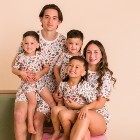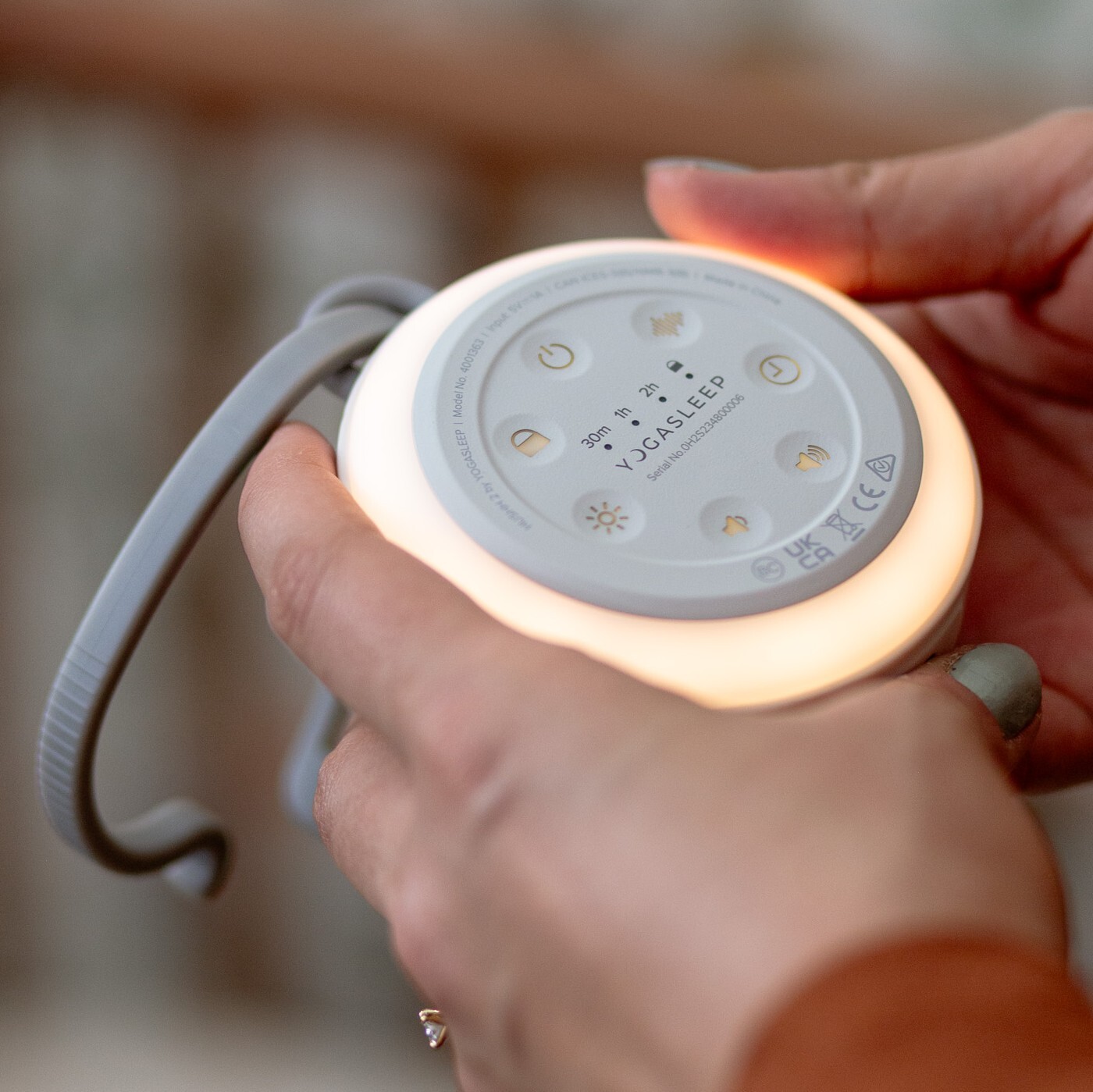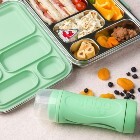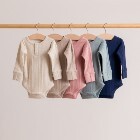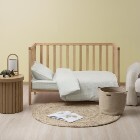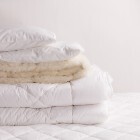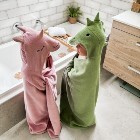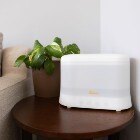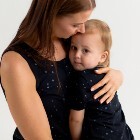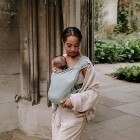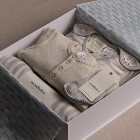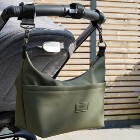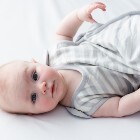Choosing a cot is a big decision for parents, and is often one of the first big purchases of baby gear, followed closely by the all-important nursery decor scheme! We have the following tips to ensure that your baby’s cot is safe.
For a Safe & Comfortable Sleep
First, choose a safe cot!
Cots sold in NZ should meet the latest New Zealand Safety Standard (AS/NZS 2172:2003). Only use a cot that is clearly and correctly labelled with this standard. Second-hand cots may not meet the standard. For example, the gap between cot bars may be too wide.
Drop-sides on cots need to be checked regularly and are one of the most likely parts on a cot to become unsafe over time. While all drop-side cots sold in NZ should meet the safety standard, parents should regularly check the mechanism works safely and reliably. Drop-side cots are now illegal in some countries due to safety concerns. Ensure you drop the mattress to the lower setting when your baby is close to sitting up.
Mattress safety check
Check that your mattress is the correct size for the cot so there is no more than a 2cm gap between the mattress and cot frame. Your cot will also state which depth of mattress can be used safety.
Baby mattresses should be a firm surface, without added toppers or sheepskins. A wool underlay should also be a firm surface when used for newborns. And we don't recommend adding a wool underlay until baby is over 6 months of age.
Mattress protectors should be waterproof, breathable and fit securely. Remember to remove all plastic packaging before using the mattress!
Position the mattress flat, rather than elevated or tilted.
Safe sleep positions
Position your baby's feet at the bottom of the cot, to avoid baby from wriggling down under the sheets and covers.
Always place your baby on their back to sleep. It is recommended to sleep baby on their back until they are easily rolling from front to back.
Do not sleep your baby on a sofa, water bed or bean bag!
Resist the cuteness – the cot should be boring!
Baby beds should have safe bedding and a baby – that’s all!
Some baby stores have cots made up with coordinated bedding sets, which are not a safe sleep choice for a newborn. For example, padded cot bumpers, cot pillows and padded duvets are a potential suffocation risk and should not be used until over 18 months of age.
Social media and magazines often show images of cots with cute cushions, toys and loose bedding. While they may look beautiful, all loose items should be removed before baby is sleeping in the cot or not be in the cot at all.
Safe bedding for newborns
Newborns are usually swaddled for the first few months. Choose a well-fitting swaddle made from natural fibre, which doesn’t come undone or ride up by baby’s face.
If a baby is becoming un-swaddled during the night, it is safest to either stop swaddling or choose an escape-proof swaddle such as one with a zip front. Babies should no longer be swaddled once they are close to rolling due to a much higher SIDS risk with tummy sleeping when swaddled.
Sheets and blankets should be tucked in firmly, no higher than armpit height. Any blankets used should be a natural fibre, such as merino or cotton. Using merino is particularly recommended, as it can help with temperature regulation.
Avoid using any type of synthetic bedding such as polar fleece blankets in your baby’s bed, as these can lead to overheating.
Bedding for wriggly babies
Once your baby is mobile, a sleeping bag is a much safer option than loose blankets. This means there is no loose bedding to wriggle under or be pulled up over baby’s face.
Sleeping bags also mean that baby is much less likely to wake up cold as the sleeping bag can’t be kicked off in the way blankets can be.
The safest option is to use a sleeping bag without anything added over the top. The correct weight of sleeping bag is all the bedding needed, and you can adjust the clothing used inside the sleeping bag according to the room temperature.
Be aware and responsive
The amount of bedding and sleepwear should depend on the room temperature and your baby. Regularly check the temperature of your baby by feeling his or her back, or ears with the back of your hand. It should feel warm, not hot and sweaty, or cold. Add a layer of clothing/bedding if it feels cold and remove a layer of clothing/bedding if it feels hot. Also, remember that a blanket doubled over counts as two layers.
Do not use wheat bags or hot water bottles in the cot and never use an electric blanket with your baby.
Make sure your baby's head and face remains uncovered during sleep. No hats or hoods in bed.
For guides on how to dress your baby to the room temperature and information on Tog ratings click here.
Keep cords and electrical items away from the cot
Position the cot away from curtain or blind cords that could get tangled around baby’s neck. Baby should not be able to reach any cords or electrical cables, such as cords for the baby monitor or a night light.
Please pay special attention to the safe installation instructions for baby monitors that have pads positioned under the mattress, as the cords need to be carefully secured and out of reach of your baby.
Room environment
The ideal temperature for a nursery is 18°C. Using a room thermometer can help you accurately monitor the temperature in your baby's room and avoid baby becoming too warm.
Parents can be tempted to make a room really warm in the winter, however, it is best to dress baby appropriately and have the bedroom no warmer than 20°C for safe and comfortable sleep.
Good quality sleeping bags such as Woolbabe come with a room thermometer and clothing guide. There are also excellent nursery thermometers, such as the Gro Egg, which changes colour to clearly show the room temperature across a darkened room.
Keep your house and baby’s room smoke-free before birth and after.
Porta-cot & Travel cots
When buying a travel cot, choose an option that meets the voluntary AU/NZ standard for travel cots. For example, a compliant travel cot has mesh on all sides, all the way to the base of the travel cot. The travel cot range available at The Sleep Store meets all current AU/NZ standards. To compare our range of travel cots available click here.
With porta-cots or travel cots only use the firm mattress or base that is supplied by the manufacturer. Travel cot mattress may look thin but are designed to be safe and have been specifically tested to comply with the safety standard. Although parents may be tempted to add an extra mattress or softer layers on top of a travel cot mattress you risk your baby’s safety by doing so as there can be a suffocation risk where baby can become stuck between the side of the cot and mattress.
Look for fitted sheets which are specifically designed for the travel cot so they fit properly. A sleeping bag or well-fitted swaddle is the safest option for use in a travel cot as it is harder to securely tuck bedding into slimmer travel cot mattress. Parents can add additional clothing as required rather than piling on loose bedding.
Related videos
Learn about white noise & how to make up a baby bassinet and cot safely with Lou from The Sleep Store.
Text



